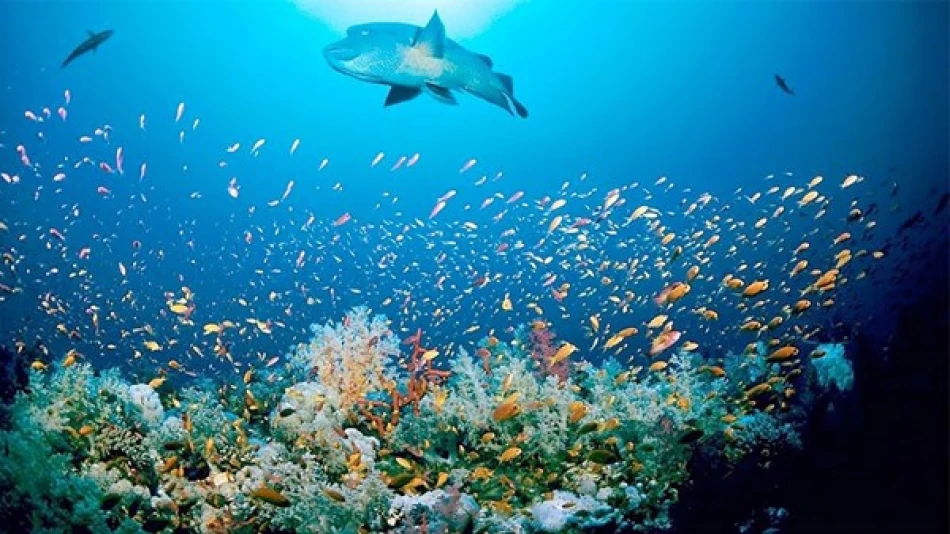
Historic Global Treaty Protects the High Seas, Safeguarding Marine Ecosystems
UN High Seas Treaty Set to Transform Ocean Conservation as 60 Nations Ratify Historic Agreement
The United Nations High Seas Treaty is officially set to enter into force after reaching the critical threshold of 60 country ratifications by Saturday's deadline. This landmark agreement will establish the world's first comprehensive framework for protecting marine biodiversity in international waters, covering nearly two-thirds of the ocean that has long remained a regulatory void.
A Decade-Long Victory for Ocean Protection
The treaty represents the culmination of over a decade of negotiations, with more than 160 countries finally reaching consensus in New York in March 2023. Dr. Sandra Alter from Pro Wildlife called it "a milestone in ending irresponsible overfishing and advancing global ocean conservation efforts."
The agreement will take effect on January 17, 2026, following the mandatory 120-day implementation period. This timeline gives governments and international organizations crucial months to prepare enforcement mechanisms and coordinate conservation strategies.
Filling the Governance Gap in International Waters
The treaty addresses a critical weakness in global ocean governance. While coastal nations control waters within 200 nautical miles of their shores, the vast expanse of international waters—covering about 64% of the ocean's surface—has operated under a patchwork of regulations that left marine ecosystems vulnerable to exploitation.
Key Provisions and Powers
The agreement establishes two primary mechanisms for ocean protection. First, it creates a framework for designating large-scale marine protected areas in international waters, potentially restricting fishing, mining, and shipping activities in ecologically sensitive regions. Second, it mandates environmental impact assessments for activities that could significantly affect marine ecosystems.
These provisions could prove particularly significant as deep-sea mining operations expand and commercial fishing fleets push into previously untouched waters. The treaty gives the international community legal tools to halt projects that threaten biodiversity hotspots or critical migration routes.
Geopolitical Significance Beyond Conservation
Russ Feingold from the Campaign for Nature emphasized the treaty's broader diplomatic importance, noting that "in this difficult time for international relations, this is an important achievement showing that multilateralism still exists, and that the international community is still capable of uniting to achieve great accomplishments."
The successful ratification comes amid growing tensions over maritime boundaries in regions like the South China Sea and increasing competition for marine resources. The treaty demonstrates that nations can still find common ground on environmental issues even when political cooperation proves elusive elsewhere.
Economic and Industry Implications
The treaty's implementation will likely reshape several maritime industries. Commercial fishing operations may face new restrictions in areas designated as marine protected areas, potentially affecting global seafood supply chains and pricing. Deep-sea mining companies, already facing scrutiny from environmental groups, will need to navigate more rigorous assessment processes before launching extraction operations.
However, the treaty also creates opportunities for sustainable ocean economy initiatives. Marine protected areas often serve as breeding grounds that ultimately boost fish populations in surrounding waters, potentially benefiting long-term fishing yields.
Implementation Challenges Ahead
Despite the diplomatic success, significant hurdles remain. Monitoring and enforcing regulations across millions of square miles of open ocean will require unprecedented international cooperation and technological innovation. Satellite tracking, DNA analysis of fish catches, and coordination between naval forces will all play crucial roles in making the treaty effective.
The agreement also lacks specific funding mechanisms, leaving questions about how developing nations will participate in monitoring efforts or benefit from conservation initiatives. These financial gaps could determine whether the treaty becomes a transformative conservation tool or remains largely symbolic.
Most Viewed News

 Layla Al Mansoori
Layla Al Mansoori






